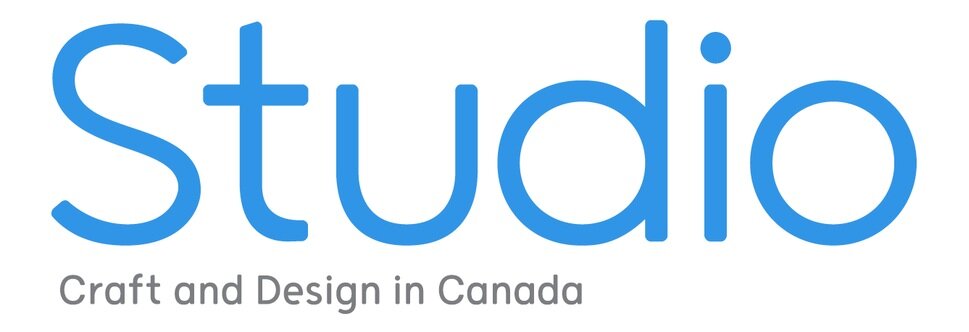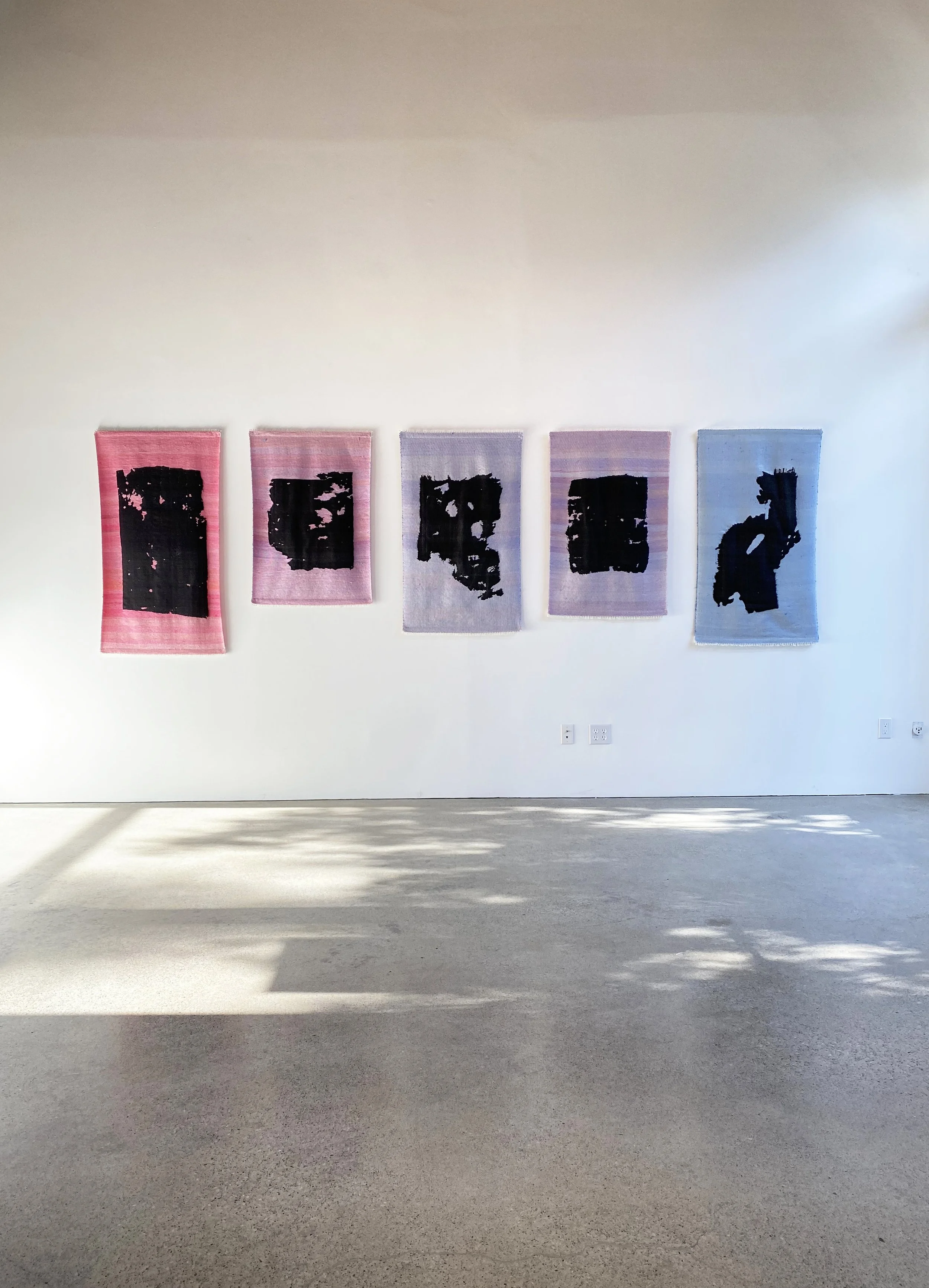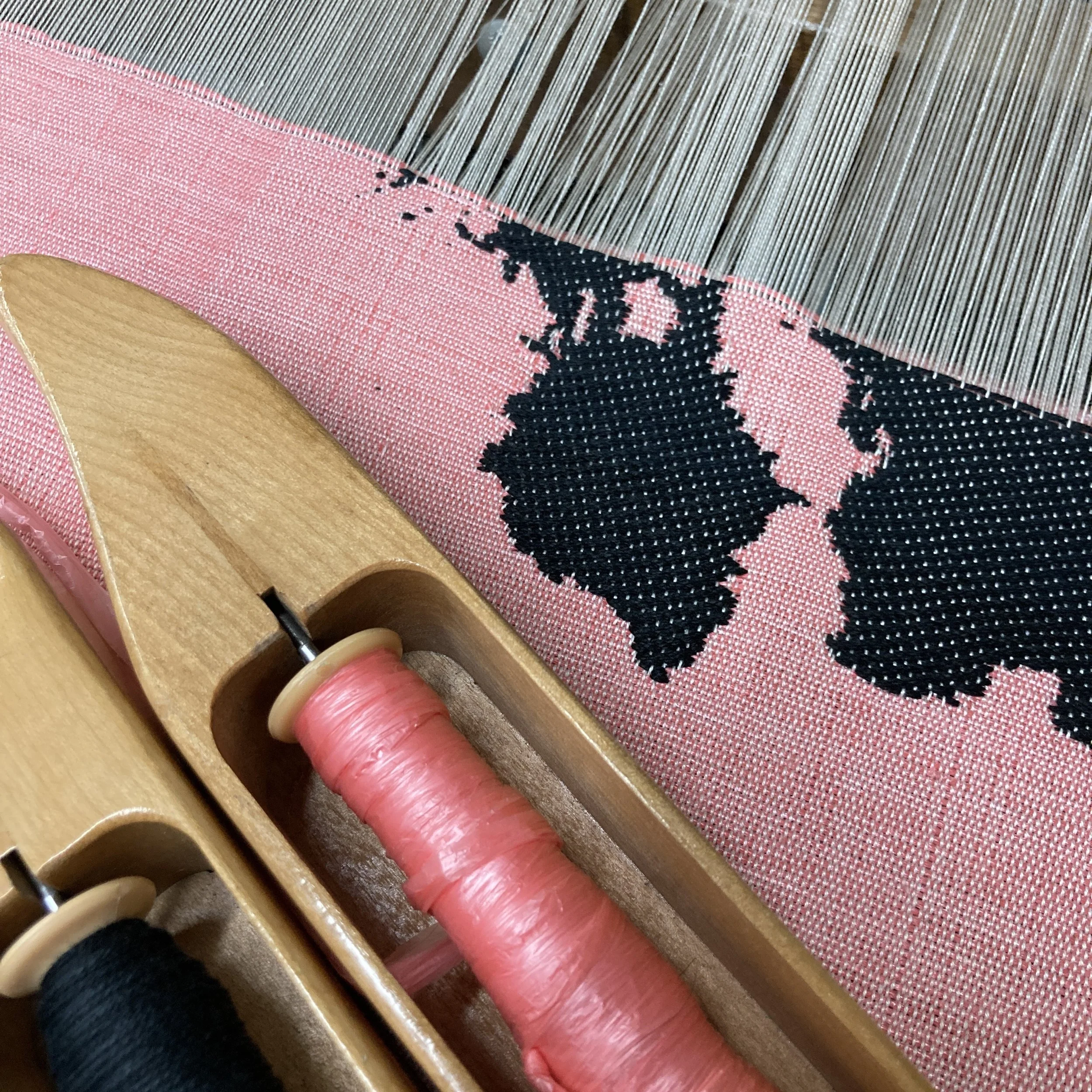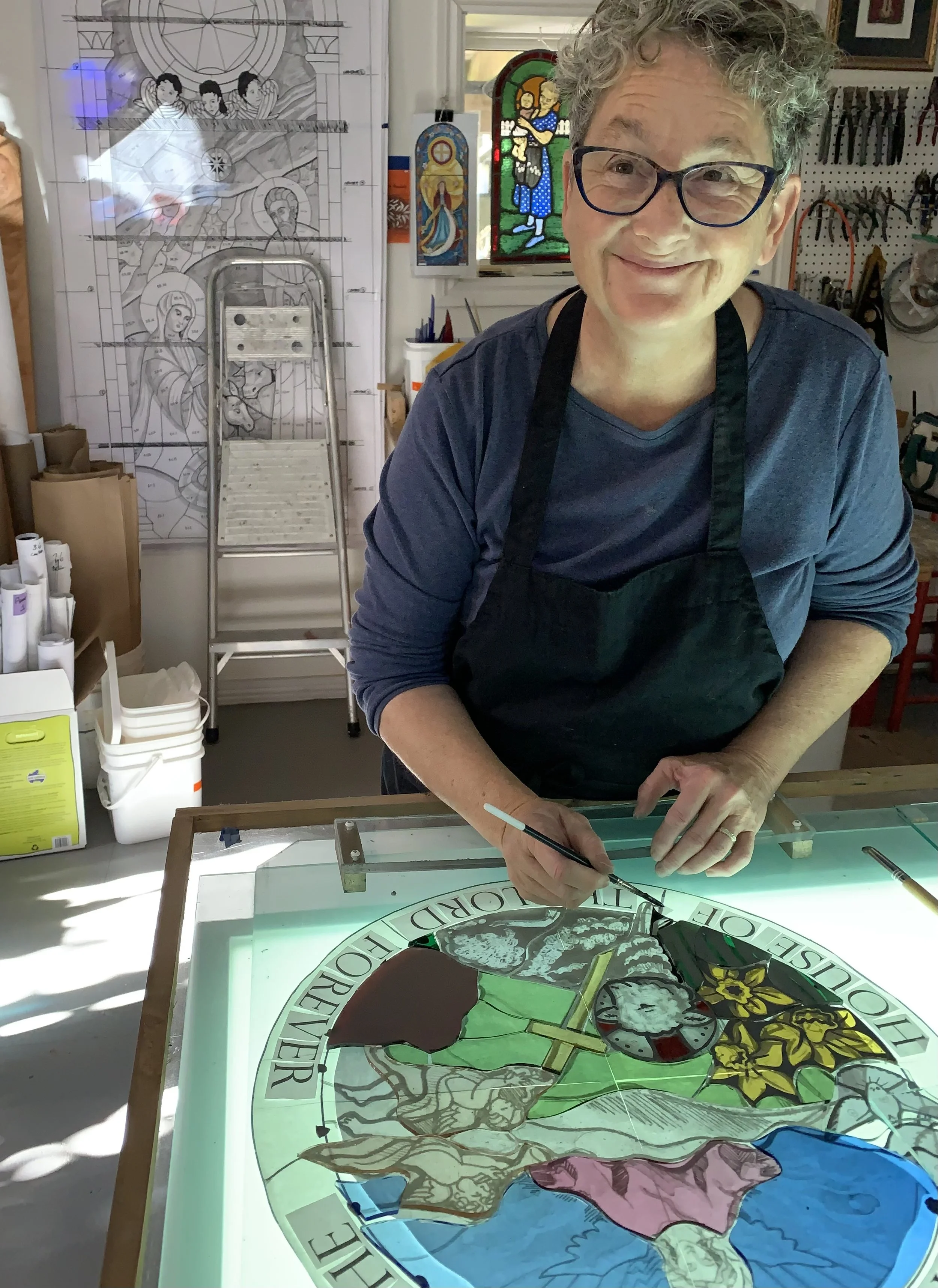Thread Count
Textile and material artist Meghan Price brings together the seemingly disparate fields of weaving and geological study. It all started in the early 2000s, during her time at the Montréal Centre for Contemporary Textiles, where she was introduced to the technologies of weaving. She discovered her passion and went on to learn both machine knitting and weaving. Price’s work is primarily focused on constructed textiles, most recently producing and experimenting with a Jacquard loom.
Price practised with textile contemporaries, including Louise Lemieux Bérubé who had become well-known for her work with the Jacquard loom and textile arts. After gaining more experience with weaving mills in North Carolina, she co-founded the label String Theory with collaborator Lysanne Latulippe. Price began teaching at Toronto’s OCAD University in 2009, but in 2021, she returned to Montréal.
Meghan Price, Fragment Series (part of the Best Estimate Exhibition), 2022. Woven cotton and waste plastic. Photo: Coleen McCarten. Courtesy of the artist.
Price’s 2022 exhibition Best Estimate, held at United Contemporary in Toronto, presents a series of hand-woven artifacts and textile collages themed around human relationships to Earth. Using found materials such as plastics and old film tape to construct some of the pieces, the exhibit opens up a dialog around the past and present by provoking its viewers to think about the intricacies of making.
I spoke with Price about how her work has coalesced, amidst industrialization and the ever-increasing digital production of textiles. Conscious about the scales of labour that exist within the industry — as well as in her own practice — Price told me what had changed for her given the current landscape of the textile industry, and where she sees potential. As a teacher, collaborator and craftsperson, Price acknowledges the value of woven work as well as its physicality.
Fragments process, 2022. Courtesy of the artist.
Erica Whyte: When I was researching your background, I didn’t realize you started in communications. Since then, textile has become an important part of your practice. What does the Jacquard loom mean to you, as a machine that’s so very tied to the art of weaving?
Meghan Price with TC2 in her Montreal studio, 2023. Photo: Eric Williams.
Meghan Price: Beyond the personal, the Jacquard machine is so often spoken about as the predecessor to the computer and weaving — structures that we have built our world around. Specifically, the Jacquard, being this predecessor to the computer is really foundational to our digital technology, which is such a big part of our daily lives. So in a way, our culture would not be what it is without this loom, without this technology. The Jacquard involved the development of punch cards. These are cards that have holes in them that feed a binary code to the loom: there’s either a hole in the card or there isn’t a hole in the card.
On a personal level, what I really appreciate about this technology — and this applies to the analog and the digital — is it dramatically expands the realm of possibility in terms of woven pattern and image. Because what happens with those punch cards, or with the binary ones-and-zeroes code, is that the warp threads are controlled individually, rather than tied banks of threads on harness looms, which means the realm of possibilities in terms of pattern and image is really endless. The Jacquard allows for working with fluid lines and even photorealism.
Hitchcock's Coal process, 2022. Courtesy of the artist.
This article is an excerpt and and is available in full in the Spring/Summer 2023 issue of Studio Magazine.










